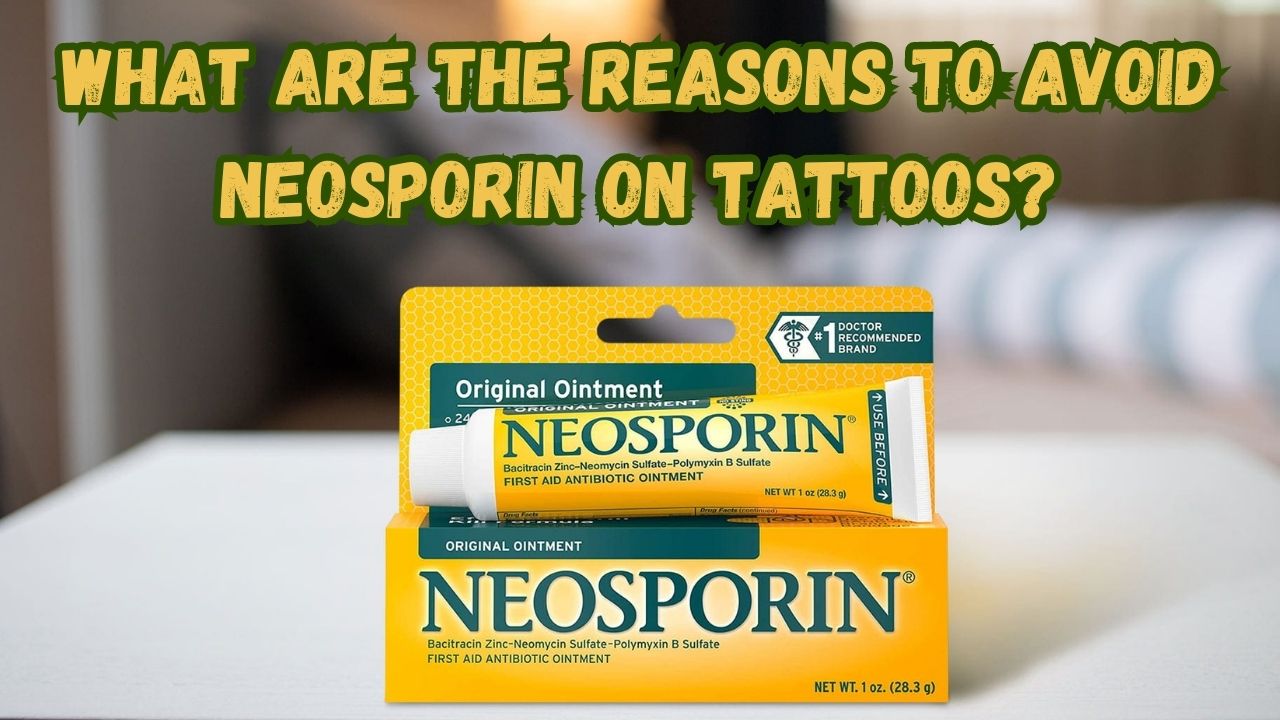Neosporin is a popular wound care prescription that some people use on their healing tattoos. It has many benefits, including hydration, moisturization, anti-oxidant healing, and many more. But What are the reasons to avoid Neosporin on tattoos? If you can use it, what is the proper way of using it, and if it’s prohibited, what are its health complications? All these and many more questions will be answered today, so stay active and read till the end.
Using Neosporin on Tattoo Wound:
Before answering the question about using Neosporin on tattoo wounds, you must understand some things. First, the requirements, solutions, and methods of tattoo healing significantly depend upon the person’s period, skin type, and health condition. Using Neosporin on healing tattoos is beneficial at the beginning of healing. It also provides protection against infection in initial healing days because of the thin layer of cream on the skin.
These were some benefits of using Neosporin on tattoos, but many tattoo artists and professionals advise against it. According to them, you should use Neosporin or any other generic healing cream or ointment on your tattoo. They give for prohibition because tattoos are different from general wounds since tattoo ink is involved in it. This is why the healing creams and ointments used for tattoo healing should also be distinguished and professionally prescribed.
Reasons to Avoid Neosporin on Tattoos:
So, we discussed that there are a lot of professionals that advise avoiding the usage of Neosporin for healing tattoos, and they have their reasons for that. But what are the actual reasons? Here we disclose the in-depth reasoning and problems that it occurs if you use Neosporin extensively on healing tattoos:
Slower Healing
The first and foremost reason to avoid using Neosporin on tattoos is that it can delay ad slow your tattoo’s healing process. A tattoo requires dry skin and proper flow of oxygen to promote better healing and health. When you apply thick layers of Neosporin on your tattoo, it blocks airflow and makes the skin moister. This would naturally slow the healing of the tattoo, and sometimes delay in healing leads to allergy.
Risk of Allergy
The sewage of Neosporin and some ingredients like bacitracin and neomycin are leading reasons for allergy to a tattoo. Of course, this might only happen to some since only some users are triggered by these ingredients, but many do. So, you have to discuss with your medical expert, read the ingredients carefully, and then decide whether you want to use Neosporin on tattoos.
Effect on Tattoo Ink
Last but not least reason to avoid using Neosporin on tattoos is that it can affect the tattoo ink, leading to blurry and disturbed tattoo design. Understand that Neosporin has a good amount of petroleum-based ingredients in its composition. Applying thicker layers of Neosporin and repeating the process several times a day can cause the tattoo ink to displace from its original placement. Eventually, when the tattoo heals, you will notice uneven ink spread, fading design, and lack of clarity in the tattoo, and all of this would be a direct result of using heavy amounts of Neosporin on healing tattoos.
Frequently Asked Questions:
Although neosporin is a good antibacterial cream for normal cuts and wounds, it doesn’t help the tattoo heal faster. Instead, it slowed the healing of a tattoo by blocking airflow, dryness, and natural healers to the skin.
Naturally, the color ink on tattoos is sensitive and dates easily; using Neosporin on healing tattoos fasteners this process. However, it has a petroleum-based composition, adversely affecting color ink tattoos, and thick layers of the product might lead to fading of color ink.
Neosporin intervenes with the natural healing process of tattoos, which is why it increases the risk of infection. In addition, if the tattoo is not dry, it will have delayed healing, making it more sensitive to bacterial infection and other complications.
Aquaphor Healing Ointment, Cetaphil Moisturizing Cream, Natural Aloe vera gel, and many other prescribed tattoo products are alternatives to Neosporin for tattoos.
It will help if you ask your tattoo artist before applying Neosporin on tattoos since it would be best for the health and quality of tattoos. Generally, Neosporin can be used in thin layerings once the swelling drops, but it’s better to avoid using it.
Conclusion:
So, What are the reasons to avoid Neosporin on tattoos? There are several reasons, including the appearance of tattoos, the health of the skin, and time and money saving. There is no denying that Neosporin is a great medical product, but it’s made for general wounds and cuts. Tattoos are special, and they deserve special treatment too. Hence you should avoid Neosporin as much as you can. You can ask more questions regarding neuropsin in the comments below or meet a tattooing expert. Thanks for reading.

Leave a Reply